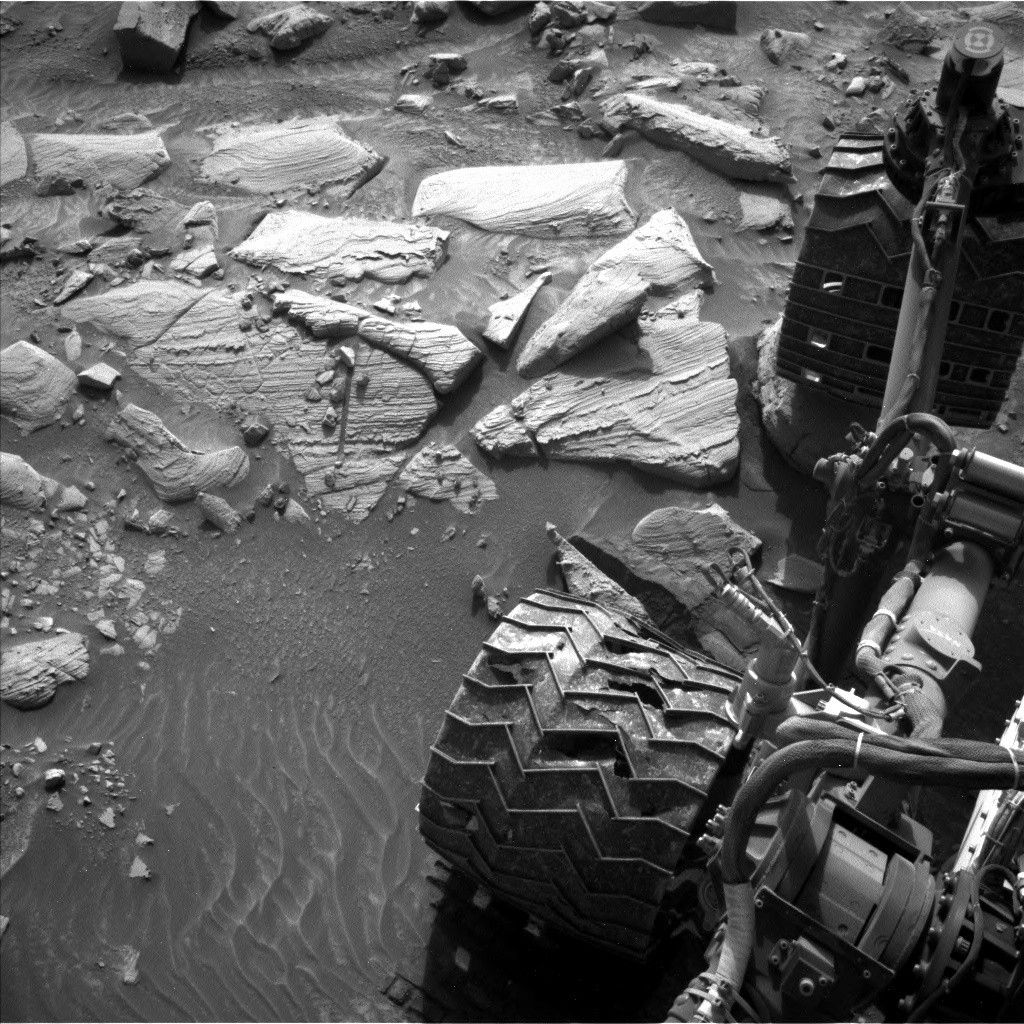Exploring Mars: A Day in the Life of a Rover
The second Martian day, or “sol,” of the recent mission was a routine one for the rover as it continued its journey across the Martian surface. This day involved several standard scientific activities, focusing largely on environmental monitoring and data collection. These activities play a crucial role in helping scientists understand the atmospheric and surface conditions of Mars, which is essential for both current and future missions.
ChemCam AEGIS: Automated Target Selection
The day began with the rover’s ChemCam AEGIS (Autonomous Exploration for Gathering Increased Science) system in action. This system allows the rover to autonomously select a target for its Laser-Induced Breakdown Spectroscopy (LIBS) instrument. LIBS is a method used to determine the elemental composition of materials by firing a laser at a target and analyzing the light emitted from the resulting plasma. By using AEGIS, the rover can make quick decisions about what to analyze, increasing the efficiency of its scientific operations.
Environmental Monitoring with Mastcam and Navcam
A significant portion of the sol was dedicated to environmental monitoring, which is critical for understanding the planet’s weather patterns and atmospheric conditions. The rover used its Mast Camera (Mastcam) to perform a “tau observation.” This involves measuring the amount of dust in the atmosphere, which can affect both visibility and the amount of sunlight reaching the surface.
In addition to this, the rover’s Navigation Cameras (Navcam) were used for several monitoring tasks. The first was deck monitoring, which involves checking the rover’s own surface for dust accumulation. Dust build-up can impact the rover’s systems, so regular monitoring is essential to ensure it continues to operate effectively.
The rover also captured a cloud movie with its Navcam. This involves taking a series of images to create a time-lapse video of the sky, allowing scientists to study cloud formations and movements. These observations can provide insights into the planet’s weather systems.
Additionally, the rover conducted a 360-degree Navcam dust devil survey. Dust devils are swirling columns of dust that are common on Mars, and studying them can help scientists understand the dynamics of the Martian atmosphere.
Power Management and Additional Observations
Interestingly, there were no arm activities scheduled for this sol. Instead, the rover engaged in a Navcam shunt prevention activity, known as SPENDI, to manage its power. This activity involves using excess power to carry out observations such as looking for clouds and dust devils. Efficient power management is crucial for the longevity of the mission, allowing the rover to continue its scientific endeavors over an extended period.
Continuous Monitoring by REMS, RAD, and DAN
Throughout the sol, the rover’s suite of environmental instruments continued their routine operations. The Rover Environmental Monitoring Station (REMS) was at work, gathering data on temperature, humidity, and wind speed. Such data is vital for understanding the Martian climate and weather, providing context for the other observations made by the rover.
The Radiation Assessment Detector (RAD) was also active, measuring the levels of radiation on the Martian surface. This is particularly important for future human exploration, as radiation levels on Mars are significantly higher than on Earth due to the thin atmosphere and lack of a magnetic field.
Finally, the Dynamic Albedo of Neutrons (DAN) instrument continued its work, assessing the hydrogen content in the soil to infer the presence of water or ice. Understanding the distribution of water on Mars is a key objective of the mission, as it has implications for both the planet’s history and its potential habitability.
Understanding the Bigger Picture
These activities, while seemingly routine, are part of a larger effort to piece together the complex puzzle of Mars’ environment. By continuously monitoring the atmosphere and surface conditions, scientists can develop a more detailed understanding of the planet’s climate and history. This information is invaluable not only for scientific knowledge but also for future missions, including the eventual goal of sending humans to Mars.
The use of autonomous systems like ChemCam AEGIS highlights the importance of developing technologies that allow spacecraft to make decisions independently. As missions venture further into our solar system, communication delays make real-time human intervention impractical. Autonomous systems enable spacecraft to adapt to their surroundings and optimize their scientific output.
Reactions and Reflections
The ongoing success of the rover’s mission is a testament to the ingenuity and dedication of the teams involved in its design, launch, and operation. Each sol brings new data and insights, fueling the excitement and curiosity of scientists and the public alike.
Experts in the field have praised the mission for its thorough approach to scientific exploration. The combination of advanced technology and meticulous planning has allowed the rover to operate successfully on Mars for an extended period. This mission serves as a model for future exploration endeavors, showcasing the potential of robotic explorers to expand our understanding of the cosmos.
Future Implications
As we look to the future, the data gathered by the rover will continue to inform the planning and development of future Mars missions. Understanding the planet’s environment is essential for designing spacecraft and habitats that can withstand the harsh conditions. Furthermore, the search for water and signs of past life on Mars remains a primary goal, with each new discovery bringing us closer to answering fundamental questions about the potential for life beyond Earth.
In conclusion, while the activities of this sol may appear routine, they are a vital part of the ongoing exploration of Mars. The data collected not only enhances our understanding of the Red Planet but also lays the groundwork for future missions that will push the boundaries of human exploration. As we continue to uncover the mysteries of Mars, we take another step closer to unraveling the secrets of our solar system and our place within it.
For more Information, Refer to this article.






























